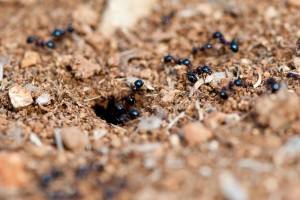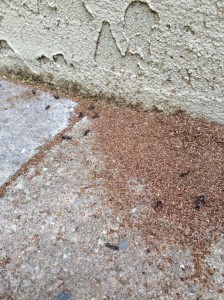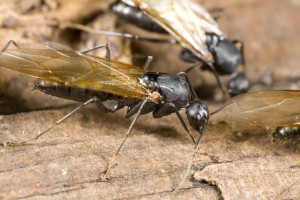How to Get Rid of Carpenter Ants
Carpenter Ants are the largest species of ants we commonly find in our area. These dark brown to black (most often black) ants are polymorphic. This means that individuals can range in size versus other ant species that are all the same. They most frequently range from 0.38-0.5 inches in length, which makes them easily noticed by property owners as they wander about foraging for food.
Proper Identification
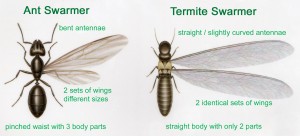 Carpenter Ants can sometimes be confused with adult termite swarmers, as they are both black and possess wings. However, there are three main distinctions between ants and termites in that they have different wing characteristics, distinctive body shapes, and differing antennae.
Carpenter Ants can sometimes be confused with adult termite swarmers, as they are both black and possess wings. However, there are three main distinctions between ants and termites in that they have different wing characteristics, distinctive body shapes, and differing antennae.
Ants, like termites, only grow wings for a short period of time when their colony gets too large. Then, they segment some of their population off to create a new colony. Wings are often found left behind as evidence. The wings of termites fall off easily whereas ants will chew off their wings and leave them behind. Many ant swarmers can also be found dead after such a flight, so it is common to find these amongst the wing debris.
Feeding Habits
Carpenter ants also differ from termites in what they eat. Where termites actually ingest and feed on wood, Carpenter Ants only use dry or decaying wood as their home. Termite damage in wood will often have moisture and mud mixed into it. This will appear in tunnels and irregularly shaped debris. In contrast, Carpenter ants will excavate tunnels inside wood and leave large piles of frass, or sawdust-like debris behind. Carpenter Ants eat a variety of foods. These typically include parts of other dead insects or substances derived from other insects such as honeydew from aphids.
Where to Look for Carpenter Ants
These ants are commonly found inside homes and other structures. The challenge is that they can forage hundreds of feet from their nesting site. As Carpenter ants forage and find other protein and carbohydrate food sources in these structures they will leave a pheromone trail behind. This trail will attract more individuals from their colony. If wood materials on window sills or soffits are left exposed, or they become a new desired nesting site for Carpenter Ants, watch out! Their numbers can drastically increase within a structure with the right conditions.
Winning the Battle – Getting Rid of Carpenter Ants
Getting rid of Carpenter Ants is very possible if their nest can be located. This becomes problematic if the nest is not on the property that is being treated. Carpenter ants can travel long distances to find food. Nests are most often in dead portions of trees, wood piles, tree stumps, etc. This can mean your neighbor has a nest and you can’t legally treat it. If you can alert the neighboring property owner of Carpenter Ant presence, and have an ant exterminator perform the needed treatment to the surrounding nest on their property, Carpenter Ant control is very achievable.
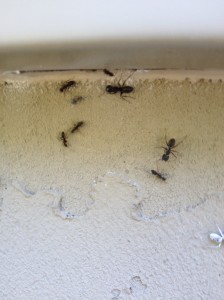 In some instances, it is difficult to locate a Carpenter Ant nest. In these situations, treating the exterior of a structure with labeled ant control materials can help to kill Carpenter Ants that attempt to get inside and can also provide a protective barrier to drastically reduce the number of ants that get indoors. These materials only last for a couple months, so it is most effective to get rid of ants when doing so with a Quarterly Pest Control program. If you are having issues with Carpenter Ants or other ant species, we’d love to talk about how we could help you.
In some instances, it is difficult to locate a Carpenter Ant nest. In these situations, treating the exterior of a structure with labeled ant control materials can help to kill Carpenter Ants that attempt to get inside and can also provide a protective barrier to drastically reduce the number of ants that get indoors. These materials only last for a couple months, so it is most effective to get rid of ants when doing so with a Quarterly Pest Control program. If you are having issues with Carpenter Ants or other ant species, we’d love to talk about how we could help you.

